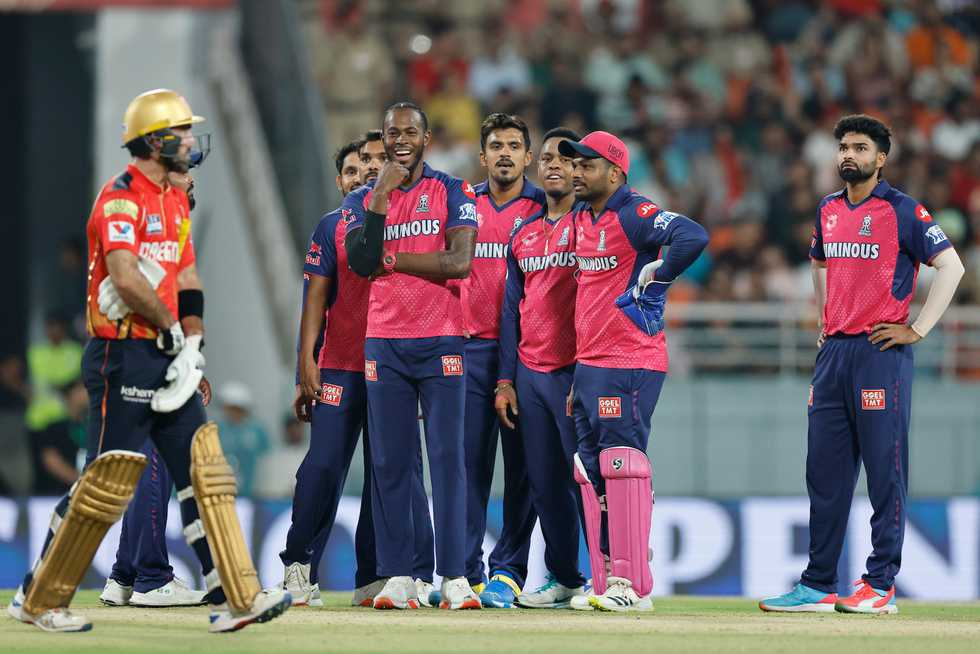

In modern T20 cricket, high-scoring 200+ matches are increasingly common, while low-scoring games also surface occasionally. Both types tend to favour a single discipline - either batting or bowling. However, the most tactically rich contests are the ones that lie in between - multi-layered games that unfold over several phases. These are matches that demand a balanced execution across batting, bowling and fielding. These are games that test a team's adaptability and strategy, and it's the effective integration of all departments that often determines the winner.
IPL 2025's first match in Mullanpur falls into that third category. While a 200-plus first-innings total - incidentally, the first ever at this venue in the IPL - and a commanding 50-run victory might suggest a straightforward, one-sided affair, Rajasthan Royals' win over Punjab Kings was anything but. Beneath the surface, it was a game full of nuance, shaped by key moments and a well-rounded team performance across departments.
The Royals were put in to bat at a venue where totals of 170 or more had been successfully defended in seven out of eight T20 matches prior to this game. For the first time this IPL season, they navigated the powerplay without losing a wicket, scoring 53 runs in the first six overs and adding another 32 in the next four to reach 85 at the halfway mark. It wasn't an all-out assault but a calculated build-up. Yashasvi Jaiswal and Sanju Samson focused on pacing the innings, laying a solid platform and setting their team up for a strong finish in the second half.
The next five overs saw runs being scored quickly, at a rate of over 11 but Royals also lost quick wickets. Samson got out in the 30s while Jaiswal, who took 40 balls to bring up a fifty - his slowest in the IPL - picked up pace but fell in his attempt to sustain it. With Nitish Rana also getting out, Royals were 138/3 in the 15th over. Riyan Parag was on 12 off 10 at that stage but he quickly shifted gears, with Shimron Hetmyer and Dhruv Jurel providing the backup firepower that enabled Royals to become the first team to post a 200-plus total in the IPL in Mullanpur.
"The way we started in the powerplay, we thought we were running a bit short but the quality of the batters we have got, 205 was a very good score on the board," said Samson to the broadcasters after the game. Shreyas Iyer too said they were looking to chase in the region of 180-185 but failed to execute their bowling plans on what he reckoned was a decent pitch with the ball holding a bit.
In contrast to the Royals, who didn't lose a wicket for half their innings, Kings were blown away right at the start as a menacing Jofra Archer, clocking high speeds, accounted for Priyansh Arya and Iyer in the first over. Marcus Stoinis and Prabhsimran Singh also departed as PBKS lost four wickets inside the first seven overs without much on the board. Nehal Wadhera and Maxwell tried to lead a comeback through an 88-run fifth wicket stand that came in only 52 deliveries, but they were always playing catch-up.
"I think the wicket was not that good," said Sandeep Sharma, who addressed the press conference after the match. "Credit goes to our batters who gave us an above-par score to defend. After that, credit goes to every bowler, especially Archer who took two wickets in the first over. He gave us an upper hand."
Sandeep also spoke about the planning that went behind their bowling effort. "(On) this pitch, the back of length was skidding and staying low. So that was the plan. We saw the other team bowling. I think we read the pitch early than the other team. So that was our plan during time-outs. We talked to the batsmen who played and got feedback on which ball was tough to hit. Which ball was tough to convert into boundary balls. So we cut down those balls."
Even when Wadhera and Maxwell were in the midst of a fightback, RR stuck to their plans and discipline. "The plan was to bowl good balls. If they are scoring runs, we wanted them to score runs on good balls. So that was the plan. And that was the talk from Sanju and the management when the timeout happened," said Sandeep.
PBKS, meanwhile, missed a trick while bowling, as spin-bowling coach Sunil Joshi would later admit, by using only four overs of spin in total - three from Yuzvendra Chahal and one from Glenn Maxwell - without any wicket. In contrast, RR used as many as 10 overs of spin and picked up four wickets, including the key ones of Wadhera and Maxwell when they were threatening to take their team close.
"I think we missed the trick. We could have bowled a couple of more spin overs with Maxwell and Chahal," acknowledged Joshi when asked about their spin strategy. Sandeep, meanwhile, said RR took notes from how the Chahal operated and built on it. "When Yuzvendra Chahal was bowling, he bowled some balls slowly and he got turn from that. So sitting outside, we got the idea that if spinners are bowling slow, the ball is turning and it's not that easy to hit."
The Royals' win was a case study in adaptability - reading the pitch, adjusting batting tempos, rotating bowlers smartly, and never letting momentum slip away. Despite the margin of victory, it wasn't dominance but smart, calculated cricket that allowed them to outthink and outplay the Kings.
| Share | Tweet |





